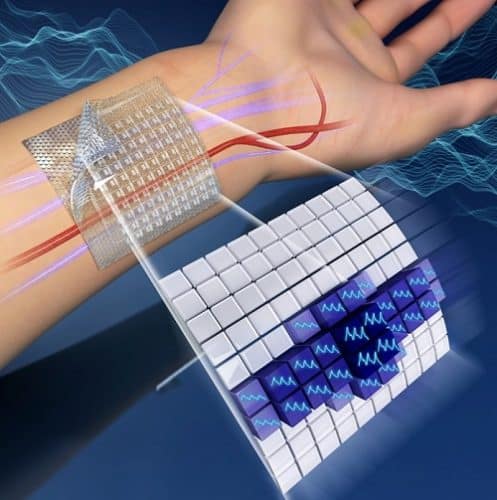The technique incorporates accurate detection and location of the arterial blood vessels in the wrist, and obtain a relevant 2D pressure map

An important biosignal that indicates the status of cardiovascular health and alerts concerning several cardiac conditions including high blood pressure and arteriosclerosis is a pulse wave. Conventional pulse wave measuring devices require the patient to wear a blood-pressure measuring cuff or stiff tong-shaped sensor and can mostly be performed at hospitals. They are also designed to measure signals only at a single location, making it difficult to accurately place them on the artery, leading to less precise measurements. All this is cumbersome.
So to ease the measurement and relevant diagnosis of cardiovascular issues, a research team from the Pohang University of Science and Technology (POSTECH) in collaboration with the School of Energy and Chemical Engineering at Ulsan National Institute of Science and Technology (UNIST) has developed a wearable sensor patch that’s thinner than a hair strand and can measure pulse wave signals with high precision.
“The newly developed technology allows for at-home diagnosis of diseases that are usually performed only at hospitals,“ explained Professor Sung-Min Park of POSTECH. He added, “it can be used for medical applications such as pre-diagnosis of cardiovascular diseases and arterial catheter injections in daily life.“
To achieve this, the research team fabricated a pressure sensor that mimicked the human skin’s touchability and enabled physical pulse waves for the patch, which consisted of 100 sensor pixels, to detect and locate the invisible arterial blood vessels in the wrist, and obtain a relevant two-dimensional (2D) pressure map. Moreover, the researchers took into consideration various age groups, genders and body sizes to design highly personalised sensor patches.
A notable thing about this research was that the patch was printed using common inkjet printing, a technology that is bound to reduce costs and is claimed as the next-generation semiconductor manufacturing method. With this technology, wearable electronic devices can be made by simply printing conductive ink on a very thin substrate.
“This study is significant in that it has demonstrated possible applications of inkjet printing to next-generation customisable wearable devices,“ remarked Professor Sungjune Jung of POSTECH.








